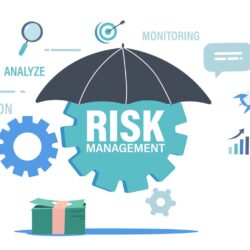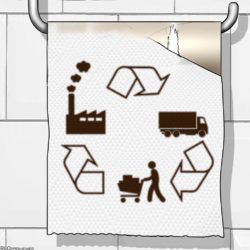Focus on the consequences of disruptions, not the causes

There’s little point in simply making a list of all the incidents that could disrupt the supply chain. There should be more focus on the impact of those incidents rather than on the incidents themselves. “It doesn’t matter whether a disruption is caused by a volcanic eruption, a hurricane or a strike. What matters is the consequences,” stated consulting firm Camelot during a recent Supply Chain Media webinar. A data-driven approach – including stress testing and a digital twin – helps to make supply chains more structurally resilient.
By Marcel te Lindert
Many companies have recently discovered that the traditional risk management approach no longer works. It is too locally focused on a single production line or plant, and it fails to sufficiently take account of the network in which it is operating. Moreover, the approach is too slow for today’s turbulent times. “It’s no longer enough to only analyse the risks on an annual basis,” cautioned Thomas Ebel, Value Chain Strategy & Transformation Partner at Camelot Management Consultants.
Increased need for risk awareness
Many supply chain professionals tend to rely on their own experience, but that is almost never sufficient to anticipate all the risks. “The captain of the Titanic had more than 40 years of experience and knew about the existence of icebergs,” claimed Ebel. “We have to accept that we are simply not that good at predicting disruptions. Moreover, for a long time incidents were too infrequent. By the time a new disruption occurred, we had often forgotten about the previous one.”
But now that the frequency is increasing and incidents are occurring in quick succession, a new approach is needed – an innovative, more data-driven approach, according to Ebel: “We need to rid ourselves of the idea that we can control the supply chain risks. What we need is more risk awareness in our decision-making. That starts with how we measure supply chain success. We’ve learned to look at three factors: service, cost and capital. We need to add sustainability, of course, but also risk and resilience. In other words, when making decisions, we need to look at many more factors besides just service and cost.”
Three scenarios are not enough
The most important change, however, concerns not how to measure risk and resilience, but how supply chain professionals do their jobs. Camelot argued that companies need to focus on five critical processes and take more account of the potential risks associated with them. “Let’s take supply chain network design as an example. Should you stick with farshoring, or should you switch to nearshoring? Until now, these kinds of decisions have always been driven by costs, but now it’s important to also quantify risks and include them in the calculations.”
Ebel added that many companies are making progress in terms of risk management; they are working on supply chain visibility, adapting their supply chain design and increasingly engaging in scenario planning. “But that approach still isn’t dynamic enough; the scope is too narrow. It’s wrong to assume that you can model the entire world in just three scenarios. It’s necessary to move towards an approach that includes uncertainty in the models, one that looks at the entire supply chain network and the interdependencies. It’s an approach that considers thousands of scenarios rather than just three.”
Three new paradigms
That new approach is only possible when three existing paradigms are changed. The first paradigm concerns the attitude to risk. Most companies try to identify the potential risks and the susceptibility of their supply chains to them. “But that’s not enough,” claimed Iris Heckmann, Head of Supply Chain Risk & Resilience at Camelot. “Because even if we know which disruptions can occur and how susceptible our supply chains are, we still don’t know the consequences. For that, we need to know more about the decision-makers. How do they measure supply chain success? And how do they think and act? That can vary from one company to another and from one decision-maker to another.”
Another important factor to consider is timing. The Icelandic volcanic eruption that led to the closure of much of Europe’s airspace in 2010 would have had far less of an impact if it had occurred around Christmas instead of in mid-April. “That’s why we need a much more dynamic approach,” Heckmann continued. “In addition, we need to answer new questions: how much of a decline in performance are we prepared to accept? And how much money are we willing to invest to improve our supply chain resilience?”
Stress testing supports proactive approach to disruptions
The second paradigm shift in risk management concerns focusing on the consequences of the disruptions rather than the causes. Referring again to the volcanic eruption in Iceland, Heckmann said: “That incident had a clear impact on a specific process: air cargo. It is difficult to calculate the impact of a volcanic eruption, but it is possible to very accurately model the impact on a specific process such as air cargo. There should be more focus on the impact of incidents on such processes rather than on the incidents themselves. Because it doesn’t really matter whether air cargo services are disrupted by a volcanic eruption, a hurricane or a strike.”
In explaining the third paradigm shift, Heckmann advocated a proactive rather than reactive approach to disruptions. “Suppose a port is hit by a lockdown. The traditional approach is to find out where the ships carrying your goods are located and what you can do to reduce delays. You often can’t do much except keep waiting. We propose doing a stress test in advance so that you can mitigate risks by adjusting capacity or inventories, for example. Then if a problem arises at a port, you are prepared for it and know that its impact will be limited.”
Structural vulnerability is the greatest risk
Heckmann showed a practical example of a stress test and how a digital twin of the supply chain can help. She had three important pieces of advice for the webinar viewers: “First of all, stop chasing disruptions. You can never foresee them all and never predict them correctly. Secondly, start preparing your supply chain for the future today, because you never know when the next incident will occur. Who could have foreseen the coronavirus pandemic or the war in Ukraine? And lastly, the biggest risk is the structural vulnerability of supply chains. If you understand the interdependencies in your supply chains, you will be better prepared for any disruption.”









